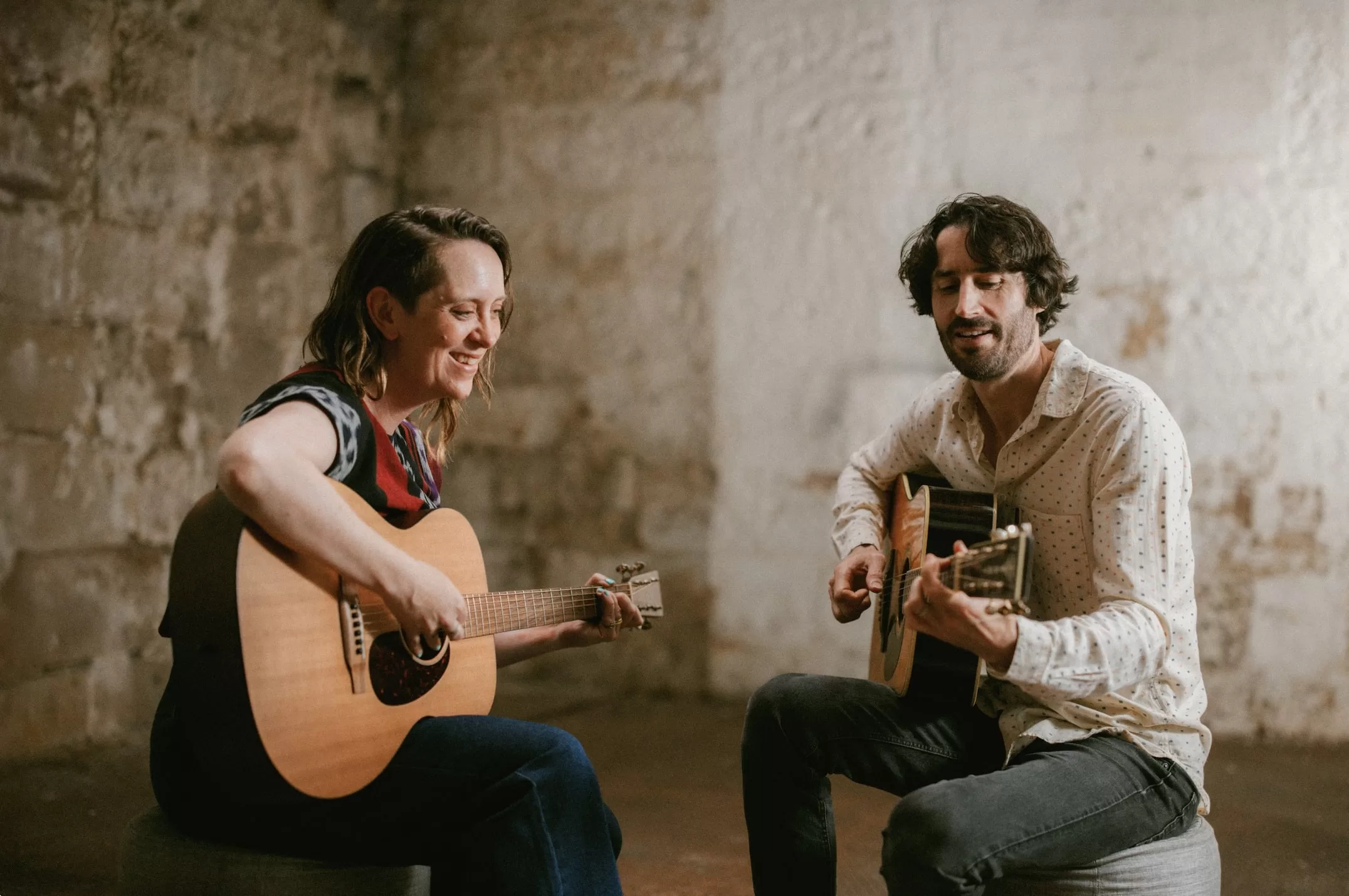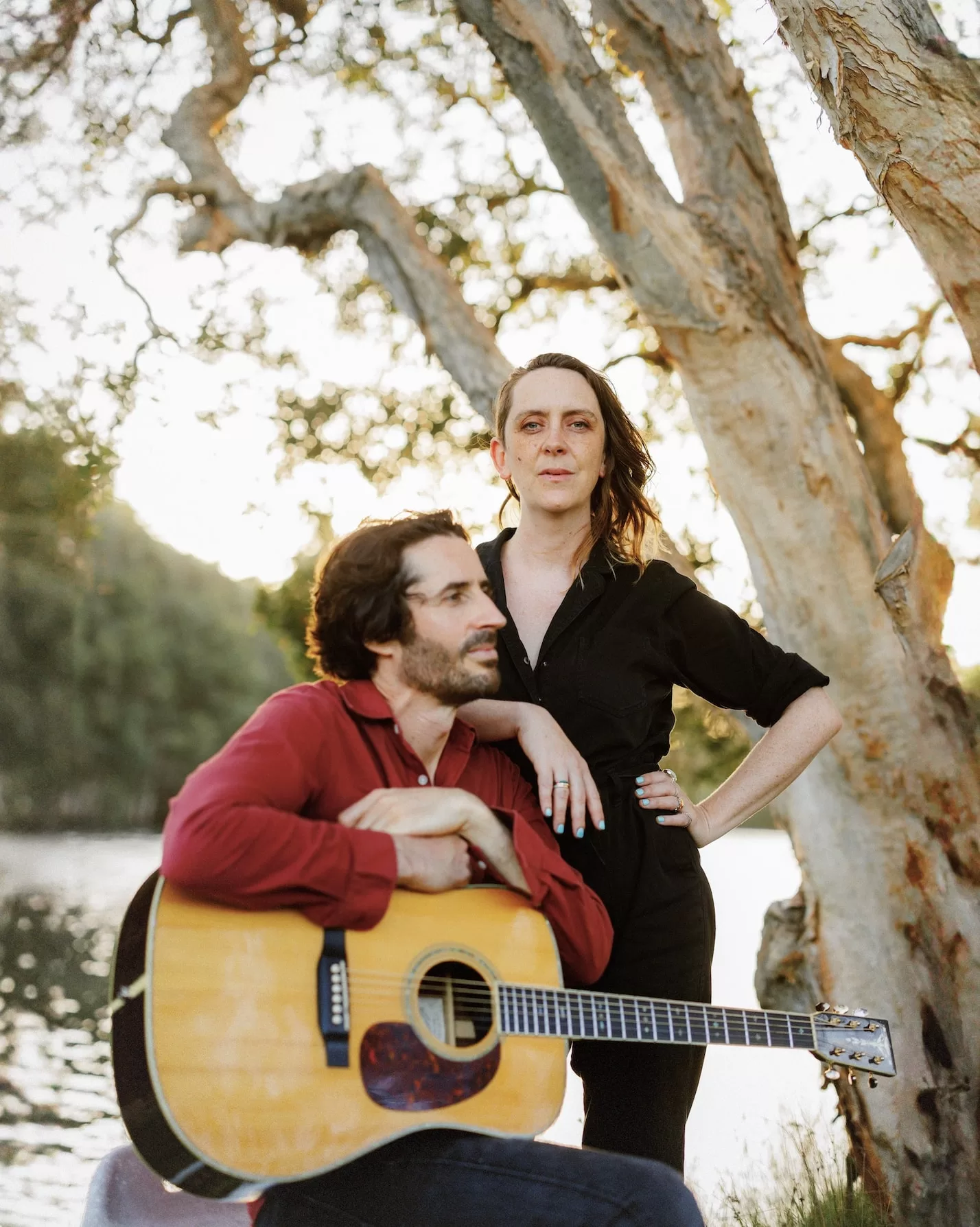Back Stage with Ben & Keppie:
YouTube, Songwriting, & the Creative Process
Written by Senjuti
I met Ben and Keppie on a bright and sunny Monday afternoon Zoom call. Forgiving and good-humoured when the steady roar of my neighbour’s lawn-mower repeatedly interrupted our call, they were personable and engaging from the get-go. The pair are artists, educators, songwriters, and founders of the How to Write Songs (HTWS). Launched in May 2021, HTWS began as a YouTube channel and quickly grew into a thriving business – an ecosystem of different platforms offering products and services, created in response to a growing songwriter community. “It’s a lovely thing where we didn’t have any of the things planned. We ended up going on a bit of an adventure, and sometimes it very much feels like we are still on that adventure, which is a really nice way to keep a business interesting and fresh and not predictable,” says Ben.
Conception
The backbone of HTWS is a twenty-year bond between Ben and Keppie as friends and musical collaborators, and their shared passion for songwriting and teaching. “I caught the bug of teaching. I loved teaching this (songwriting) as soon as I started doing it. I was always motivated by how to help other songwriters write better songs and express themselves better. That allowed me to be always looking at my own songwriting and asking the question of what’s working, what’s not working; and I find that kind of self-reflective part of it really satisfying,” reflects Keppie. Recalling the conception of the channel, Ben adds, “In the beginning, Kep and I were really keen to experiment with the single thought – what if we take the content we love delivering in classes and lecture rooms and modify it for YouTube? What would it look like?” YouTube was a natural fit for the two given their expertise with the audio world. “It’s actually a really close relationship between knowing audio software and knowing video software. If you speak French, it’s relatively easy to learn Spanish- these two things are kind of analogous skill sets.”
Process
Creating content for the YouTube universe is a creatively liberating experience for Ben and Keppie. “What is the highest value content we can put forward to our songwriting community? What are the challenges they are most struggling with and how can we help them solve that problem as quickly and as effectively as possible? Because we don’t have any bureaucratic restrictions, we get to answer that question as creatively as we can each week,” says Ben. The pair aim to provide “discrete packets of high-value information” on a platform where “there’s a profound interest-based learning that can happen,” adds Keppie. Assembling each video takes anywhere between fifteen to twenty hours end-to-end. Elaborating on their process, Ben explains, “The system we have found ourselves working in, feels very manageable, where we shoot and batch (the content). If you’re thinking about it all the time, it feels quite fatiguing. But we are always hearing people say things, or seeing content, and (we) go ‘oh that’ll make a great YouTube video!’”
Learning Curve and the Attention Economy
In their initial days on YouTube, Ben and Keppie thought that making videos based on the content they were delivering in classrooms was going to be sufficient. They were quickly proven wrong. A steep learning curve and a few training sessions with seasoned YouTuber Ali Abdaal set them on their way. “We learned that YouTube videos are their own art form- their own visual language. We learned what that visual language was, and what the optimal structure for a YouTube video actually is,” explains Keppie. In addition to the art of video making, they had to learn to play by the rules of YouTube, which meant understanding the rules of the online attention economy. Ben admits, “The thing that hurt me was that (with) all of the work we put into the video, no one is stopping to look at it. It hasn’t done the thing we wanted it to do – reach people and help them with their songwriting. We had to start taking that attention-grabbing thumbnail side of things really seriously if we wanted the content to actually get a look in.”

The significance of a title and thumbnail in the YouTube world is immense: to the extent that they are customised specifically to cater to different audiences. Keppie explains to me that they have narrowed it down to two clear audience groups: YouTube for education and YouTube for entertainment. She elaborates, “There is what’s called ‘browse consumption’, which is when the algorithm knows that someone is inherently interested in music and songwriting and will suggest our videos to them on their homepage. We know the sorts of videos that are going to capture that attention and how to optimise them for that. Then there is a completely different type of video, which is trying to solve the problem of someone who is there for education, typing into the YouTube search bar, ‘How do I do this thing?’ you know? And we want the title of our video to just very clearly indicate that ‘you’ll find your answer here!’”
Guiding light
As entrepreneurs wearing multiple hats, Ben and Keppie have some simple guiding lights in leading ‘HTWS’. One of the most important ones is the key question: “Does this help people become better songwriters?” They are firm believers in songwriting as a learnable skill and are driven by helping people get better at this skill. “We fundamentally believe that songwriting is one of those things where you can absolutely get better at it through repetition. It’s such a common mythology that you either have it or you don’t. The conversation we have is underpinned by that idea,” emphasises Ben. “Another guiding light is really loving the process,” adds Keppie. “Fundamentally, I would say that loving the process and doing it for the fascination, challenge and struggle with the craft – that that is enough. Another huge guiding light in the way that we make content is that we are here to build and construct – not ever to rip down.”
Art & Fear
Creatives and their dance with fear is well-known. For Keppie, it is no different. But life experiences and perspectives afforded by time have shifted the anxious duel with her craft. “I definitely still can have a sort of anxious relationship to creativity and that’s certainly the case when I go through periods of time when I’m not creating regularly. But I think (with) the benefit of time, I am more able to identify the cyclical nature of the creative process – that there will be periods of creativity, of output, and then there will be periods that appear to be less creative. It’s more incubation or hibernation. Time gives you the perspective of observing that cycle, which I think reduces the fear of those fallow periods.” Having been a practicing creative for many years now, she has developed tried and tested methods for tackling creative anxieties head-on. “I now have confidence in a certain set of tools and exercises that I know that I can return to again and again, that will immediately activate the songwriter muscle. So even when I experience fear or anxiety, I know I can get over that pretty quickly by coming back to these basic sets of tools. For me, an exercise called ‘sense writing’ is a great way that I can drop back into the songwriter’s brain from a lyrical perspective,” she adds.
Reflections on a ‘good’ song
During her years at Berklee, Keppie spent a week with John Mayer, and the lessons from that week see her through till today. She shares the one key philosophy that influences how she thinks, writes and experiences songs. “He generously shared with us that a song should really stand on its own – being played with a guitar or piano and sung just like that – before being taken into the studio. When a song is strong like that and has strong bones, the production process can be really smooth, efficient, and fast. His whole philosophy is that production is best when it is simply elevating the song that is already there. It is not the production that is driving the boat. That’s something that I carry with me and my teaching.”

To the two who have been writing songs and teaching the art and craft of songwriting for decades, I pose the one big question: what is a good song? Keppie’s take on a good song is refreshingly accessible. “When a song is just an act of catharsis – the songwriter is expressing something that feels like an emotional dump, rather than a hand reaching out to take another hand – that doesn’t feel good to me. When a song feels like it’s reaching out to communicate and draw you in, and it’s trying to empathise or reflect or reveal a perspective – that to me is a marker of a good song. That has nothing to do with any specific technical thing, does it? It has everything to do with intention and then all the technical stuff is a way to refine that intention and more effectively reach out the hand.” Ultimately, it boils down to dedication, sincerity, and due-diligence. Ben elaborates, “If I feel the songwriter really cared about making the song, I think you’ll feel that as much as you hear it. When you hear someone who has really worked to create a beautiful collection of elements – craft this gift for you to listen to, the feeling of that is incredible! It’s a beautiful thing!”
To receive regular songwriting tips from Ben & Keppie delivered straight to your inbox, click here!
About Ben & Keppie:
Keppie and Benny have been teaching songwriting in world-class and globally recognized colleges and universities for over 15 years, including for The Berklee College of Music, the Sydney Conservatorium of Music, the Australian College of the Arts, and more. Teaching others is not a “plan B” for them – it’s a calling, a passion, and a privilege, which has been sought out by the world’s best institutions of higher learning in contemporary music education.
Keppie’s original and co-written songs have been streamed over 10 million times in the past 3 years alone; an album of original work was commissioned by Penguin Random House in 2022; and in 2024 she was a featured artist on the Grammy-nominated album, “Aaaaah,” by Andrew & Polly.
Benny is a founding member of internationally touring bluegrass band The Green Mohair Suits, and has been commissioned for major composition projects by Adobe, Cathay Pacific and Audible.
Their popular YouTube channel, How to Write Songs, has well over 150K subscribers, and almost 8 million views of their videos. Their unique ability to turn theory into practice with passion, humour, and joy, has inspired songwriters around the world.